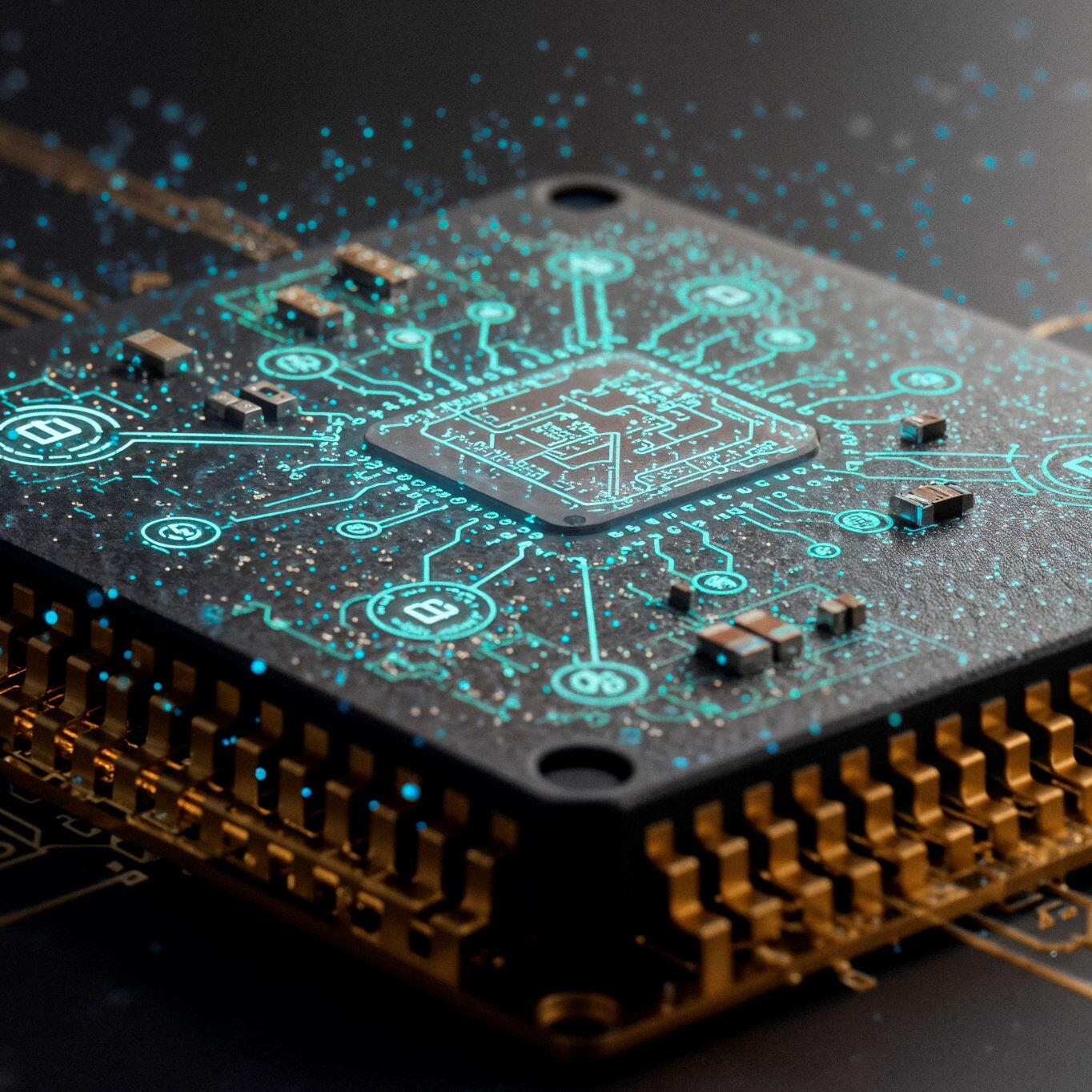Data centres are feeling the heat: AI and high-performance computing generate immense waste heat that overwhelms traditional air cooling. Increasing power densities, rising energy costs, and high outdoor temperatures in summer intensify the cooling challenge. Efficient and cost-effective cooling strategies are now more essential than ever.
This guide introduces the forward-looking liquid cooling technologies Liquid Cooling and Immersion Cooling to prepare your IT infrastructure for the demands of tomorrow.
Why efficient cooling in the data centre is becoming increasingly important
For years, the go-to response to rising heat was to install more powerful fans and turn up the air conditioning. But this approach is now hitting technical and economic limits. With the increasing power density of modern servers and the heat generated by specialised GPUs, traditional air cooling is simply no longer up to the task – it’s inefficient, power-hungry, and takes up too much space. Today’s data centres need smart solutions that keep performance and energy consumption equally under control.
The insatiable energy appetite of AI and HPC
Processors for high-performance computing (HPC) and modern AI accelerators are marvels of engineering – and at the same time, serious heat generators. Just a few years ago, the thermal design power (TDP) of a typical server GPU was between 150 and 300 watts. Today, a single Nvidia Blackwell B200 Tensor Core reaches up to 1,200 watts. In systems like the GB200, these high-performance GPUs are even used in pairs.
As a result, not only do performance figures skyrocket – the demands on thermal management rise dramatically too. Traditional air cooling quickly becomes a bottleneck and a cost driver. It can account for up to 40% of a data centre’s total energy consumption, which results in poor PUE values (often above 1.4) and soaring electricity bills. In times of strict ESG requirements, this level of inefficiency is simply no longer acceptable.
Air cooling at its limit: Chipmakers pave the way for new methods
The major chip manufacturers are actively driving this transition:
- Nvidia has designed its new Blackwell architecture around the GB200 superchip specifically for direct liquid cooling. Only liquid can reliably tame such extreme power densities.
- Intel and AMD are working closely with technology partners to validate and optimise their most powerful CPU families – Xeon and EPYC – as well as their GPU accelerators for liquid cooling.
The message is clear: if you want to unlock the full potential of the next hardware generation, liquid cooling is no longer optional.
Liquid cooling: proven technology with new possibilities
Liquid cooling uses a coolant to dissipate the heat generated during operation. A particularly efficient method is so-called direct-to-chip cooling, where the coolant is directed straight through specialised cold plates on processors, GPUs, or other hotspots. This approach is like a precise surgical intervention: instead of cooling the entire room or server, the cooling is applied exactly where the most heat is produced.
Liquid cooling technology is no longer a niche solution – in recent years, it has established itself as a powerful alternative to traditional air cooling.
The advantages of liquid cooling
- Targeted cooling for your power chips: Liquid conducts heat 25 times better than air. That means even heat monsters drawing over 1,000 watts are kept under control – allowing your AI and HPC systems to operate at full throttle.
- More computing power per rack: With no need for bulky fans or wide air corridors, you can pack your racks more densely and fit more compute power into the same footprint.
- Peace and quiet in the server room: Fewer fans means much less noise. That’s good news for your ears – and your colleagues’.
- Heating instead of just cooling: The waste heat generated by modern DLC systems becomes a valuable resource. Use it to heat your building and reduce operational costs – a major plus for your ESG balance sheet.
- Perfect for retrofitting: Thanks to their modular design, many DLC systems can be easily integrated into existing 19-inch racks. Ideal for modernising your data centre infrastructure.
Liquid cooling in practice: Use cases and applications
A prime example is Nvidia: the new GB200 NVL72 system was designed from the ground up for direct liquid cooling in order to keep its immense performance in check. Leading hyperscalers are embracing this trend, and even enterprise data centres are adopting DLC for performance-intensive workloads.
Typical use cases include:
- High-Performance Computing (HPC): Enables maximum compute power in research and science without thermal throttling during complex simulations.
- Artificial Intelligence (AI) & Machine Learning (ML): Maximises performance per watt during large model training and shortens compute times.
- Financial services: Delivers top performance in tight spaces – essential for latency-sensitive high-frequency trading.
- Media & Entertainment: Ensures stable and quiet continuous operation during demanding 3D rendering tasks.
Limitations & challenges of liquid cooling
As efficient as liquid cooling may be, it does come with some challenges. Installing pumps, cold plates and coolant loops is more complex and requires specialist know-how. Water-based systems must be regularly checked for leaks – even minor leakage can have serious consequences for hardware.
And keep in mind: direct liquid cooling (DLC) only cools the “stars” – like CPUs and GPUs. Other components such as memory or network chips still rely on air cooling. That means you’re managing a hybrid system and must ensure there are no thermal imbalances between different cooling zones. Expert knowledge is essential.
Immersion cooling: a quantum leap in cooling architecture
Why settle for less when you can go all-in? Immersion Cooling submerges your entire server in a non-conductive liquid bath. The coolant envelops every component, dissipating heat silently and evenly – without any fans. There are two methods:
- Single-phase immersion: The coolant stays liquid, flows over the components, absorbs heat, and is cooled externally in a simple loop.
- Two-phase immersion: Things get physical here. The coolant boils at hot spots, rises as vapor, condenses at the top, and rains back down onto the hardware.
The benefits of immersion cooling
- Maximum cooling power for extreme densities: Every component is bathed in coolant, eliminating hot spots and delivering unmatched thermal stability – even at the highest compute densities.
- Massive energy savings: Without fans or air conditioning, you can cut cooling energy use by up to 95%. Your PUE drops significantly – and room temperature becomes irrelevant.
- More power in less space: Forget about hot-aisle/cold-aisle separation. Immersion tanks sit close together, enabling extremely high compute density and better space efficiency.
- Longer hardware life & better reliability: Immersed hardware is protected from dust, moisture, and vibration. Stable temperatures reduce component wear and increase overall system reliability.
- Efficient heat reuse & sustainability: Coolants in immersion systems reach higher temperatures, making heat recovery more effective. Reuse the waste heat for building heating or feed it into district networks – great for cutting costs, reducing CO₂ emissions, and meeting ESG and green IT goals.
Immersion cooling in practice: use cases and real-world examples
Immersion cooling has grown from a niche concept into a field-proven solution for ultra-dense workloads. A standout example is RNT’s iXora HRM-4: instead of open tanks, the system uses closed cooling cassettes that fit directly into 19-inch racks. Each cassette handles up to 4 kW of thermal load (up to 16 kW per chassis), making it ideal for even the most demanding AI and HPC workloads.
Thanks to its high power density, immersion cooling is proving valuable in several high-demand environments:
- High-Performance Computing (HPC) & Artificial Intelligence (AI): Enables dense, thermally stable clusters with no throttling.
- Blockchain & Crypto Mining: Provides cost-effective, reliable cooling for power-hungry rigs.
- Edge Computing: Creates compact, ruggedized systems for space-constrained or harsh environments.
- R&D Labs: Allows experimental hardware and prototypes to run under perfect thermal conditions.
Limitations & challenges of immersion cooling
Of course, this leap into the deep end comes at a price. Initial investment is higher – you’ll need specialized equipment: tanks, dielectric coolant, and modified infrastructure.
Maintenance also requires a different approach. If a component needs replacing, servicing inside the fluid bath is more complex and requires trained personnel. But here’s the upside: with no fans and hardly any moving parts, immersion systems are extremely low-maintenance and rarely fail.
When properly planned, immersion cooling is an investment that pays off – especially if you’re aiming for maximum density, superior cooling performance, and true sustainability.
Liquid cooling vs. immersion cooling – a direct comparison
Both technologies are miles ahead of traditional air cooling, but they play in different leagues. So, which one is right for you? The answer depends entirely on what you’re planning to do.
Direct Liquid Cooling (DLC) is your first choice if …
- … you want a flexible retrofit: DLC can be seamlessly integrated into existing 19-inch racks – ideal for gradual modernisation.
- … you need targeted power cooling: Perfect for AI and HPC clusters with high, but not the most extreme, power densities.
- … easy maintenance matters to you: You want quick access to your components at any time – without having to drain everything first.
Immersion Cooling is your match if …
- … you need to tame maximum power density: This is all about pushing the absolute limit of performance per rack – ideal for high-density computing, AI training, or mining.
- … you need a self-sufficient system at the edge: Perfect for micro data centres in locations without optimal climate control or with limited space.
- … you’re building from the ground up: Design your data centre from day one for maximum efficiency in terms of space and energy.
- … sustainability is your top priority: You aim to virtually eliminate cooling-related energy consumption and exceed your ESG targets.
Hybrid cooling strategies: the best of both worlds – DLC and immersion
The smartest solution is often a mix: use Direct Liquid Cooling to target your CPUs and immerse your ultra-hot GPU clusters in a cooling bath. This approach cuts costs, keeps maintenance simple, and tackles thermal peaks exactly where they occur.
The table below compares the technologies based on key criteria:
| Criterion | Liquid Cooling | Immersion Cooling |
|---|---|---|
| Cooling Performance | Very high (direct to chip) | Maximum (all components) |
| Energy Efficiency | Significantly better than air cooling | Even more efficient, no need for aircon |
| Space Requirements | Lower than air, modular design | Very low, high packing density |
| Compatibility | Many servers can be retrofitted | Specialised hardware preferred |
| Maintenance | Easier than immersion | More involved, but required less frequently |
| Use Cases | AI, HPC, cloud, traditional servers | High-density, HPC, mining, AI training |
Important: A thorough needs analysis is the first step towards choosing the right cooling strategy – whether liquid, immersion or hybrid.
Our service: Keep a cool head with RNT
Optimal cooling is complex. Our job is to make it simple for you – with expert advice and the right hardware.
Compact, modular, efficient: immersion cooling with iXora HRM-4
Forget about major retrofits. Our iXora HRM-4 brings the power of immersion cooling directly into your existing 19-inch rack. Instead of large-scale tanks, the system uses enclosed, rack-mountable cassettes. Each unit features a carry handle, can be removed individually, and allows for particularly easy maintenance and inspection.
Not only is the system compact and extremely powerful – with up to 16 kW – it also offers:
- Simple and maintenance-friendly design: Thanks to the carry handle, each cassette can be removed individually.
- Whisper-quiet and energy-saving: The pumpless design (chimney effect) reduces noise and maintenance to a minimum.
- Extremely cost-effective: With a PUE below 1.04, you can drastically cut your cooling costs – often by up to 50%.
Frank Wildmann, Senior IT-Systems Engineer at RNT
Conclusion: the right cooling strategy for your data centre
Data centres are the backbone of the digital world — but they need the right environment to operate efficiently and reliably. Immersion Cooling and Liquid Cooling offer two innovative solutions to the thermal challenges of modern IT. Which one is better? That depends entirely on your specific requirements.
One thing is clear: those who set the direction for investment today will determine the performance, operating costs, and ESG footprint for years to come. And often, the return on investment comes sooner than expected. At RNT, we’re here to help you make the right choice — with the right technology, expert advice, and experience gained from countless projects.

Marco Matthias Marcone
Head of Marketing, RNT Rausch GmbH
Sources used
Know-how about digitalisation, servers and storage

NIS2 made easy: Immutable storage contributes to compliance
The new NIS2 Directive presents companies with the challenge of enhancing their cybersecurity measures and ensuring data integrity. With immutable storage, businesses can ensure that critical data is permanently protected and cannot be altered. This technology not only provides increased security but also meets the stringent requirements of NIS2.
Discover how immutable storage can help your company comply with the directive while safeguarding your sensitive information.
Autonomous driving: Why is it taking so long?
Self-driving vehicles are equipped with complex IT and require a reliable, fast…
Mountain School in the Dominican Republic
A school with a different concept. Instead of the traditional curriculum that…
Big Data management for SMBs and SMEs
‘Big Data’ and the ‘uncontrolled growth of data’ – these buzzwords/phrases…
Hello Europe
At RNT we design hardware which enables software to unleash its full potential.…
Object storage for AI applications:
scalable storage for data-intensive workloads
Artificial intelligence needs data – and vast amounts of it. Traditional…








